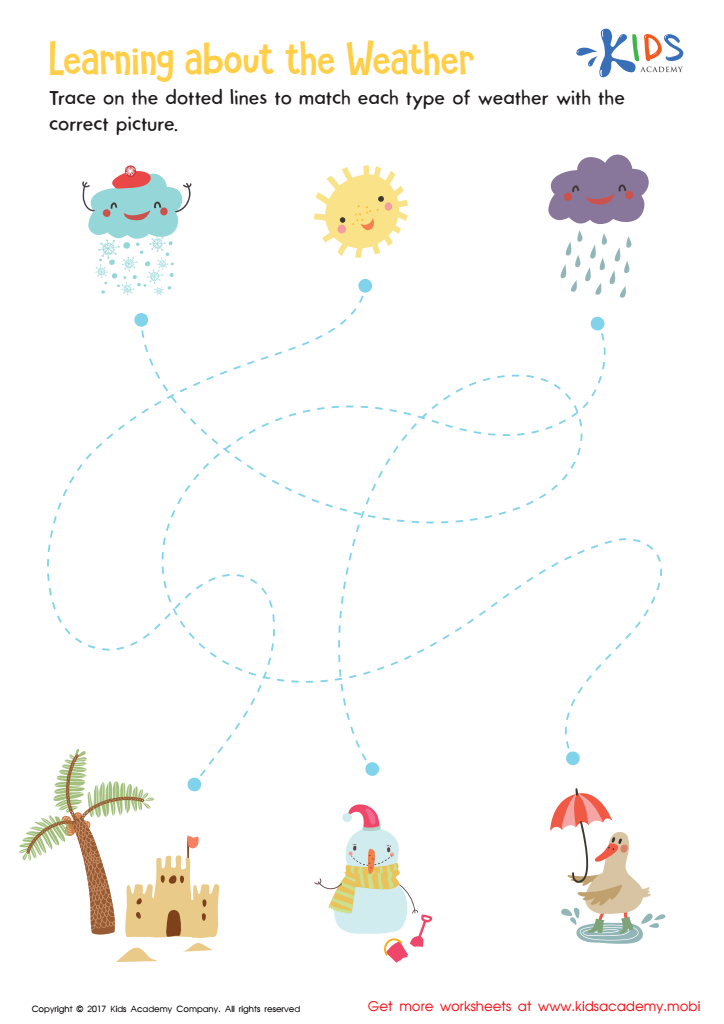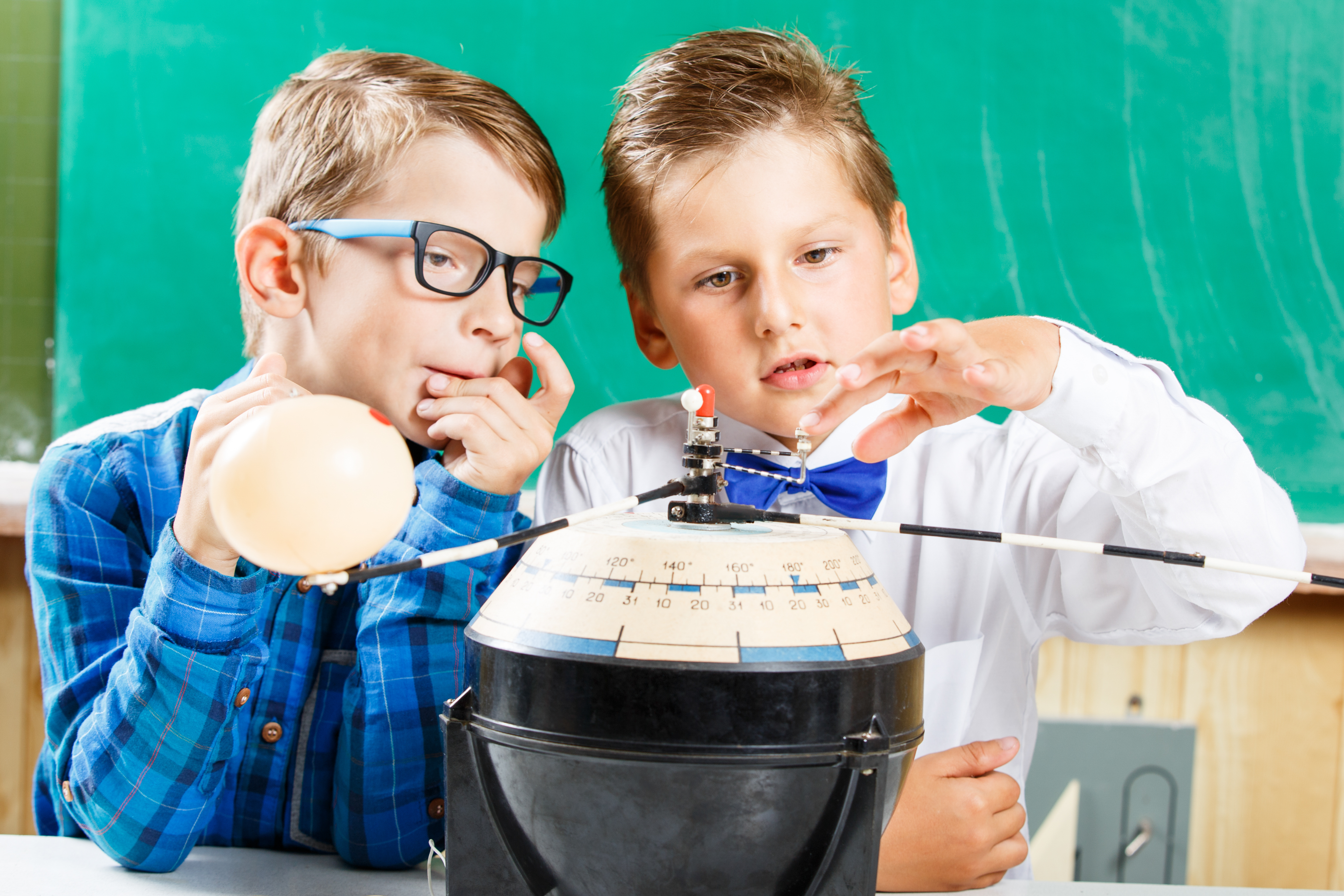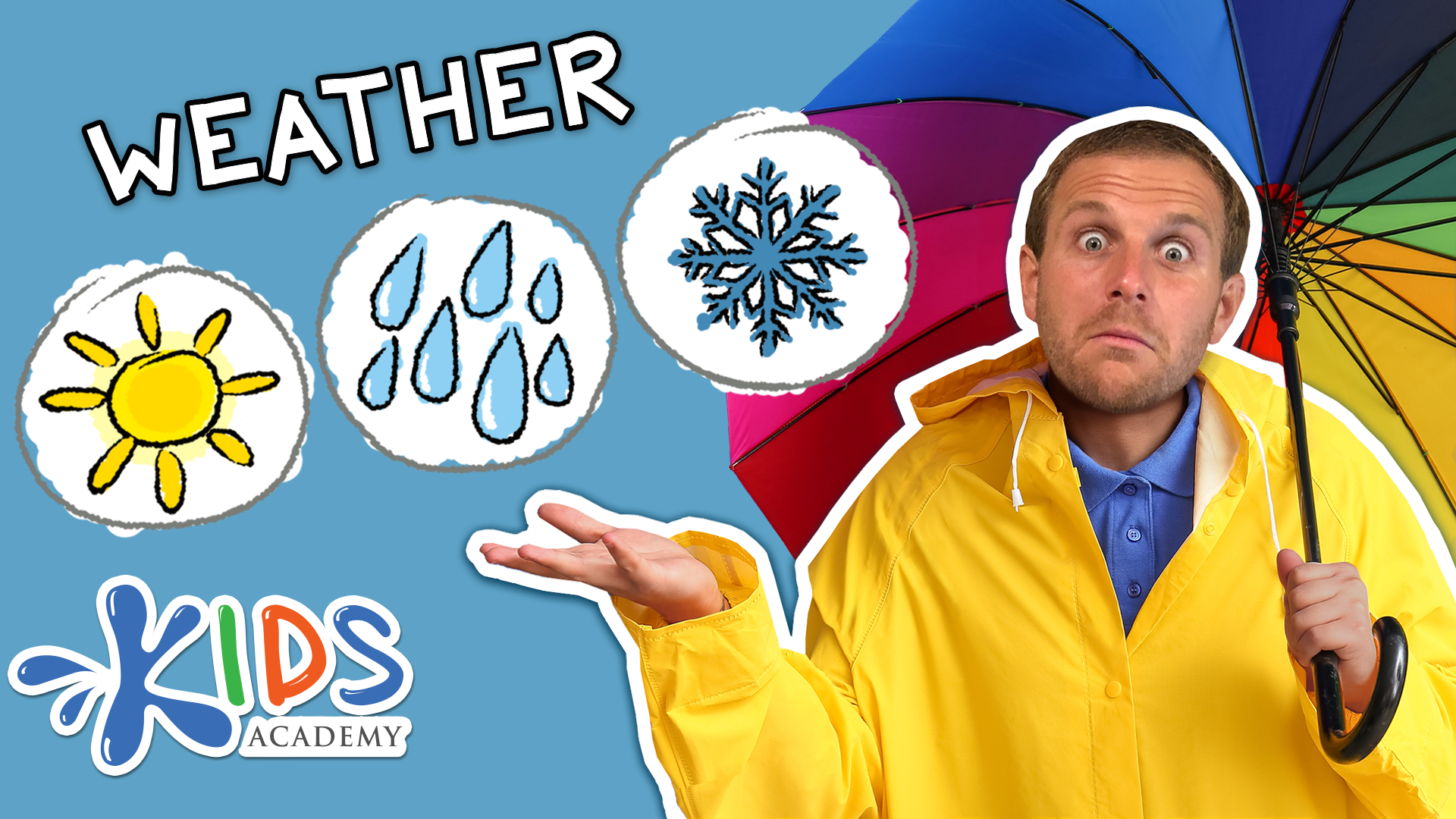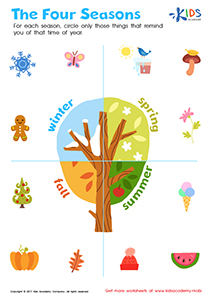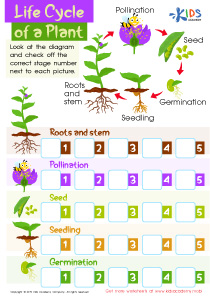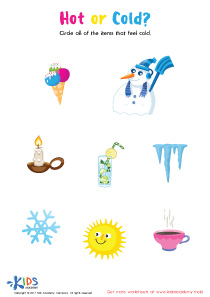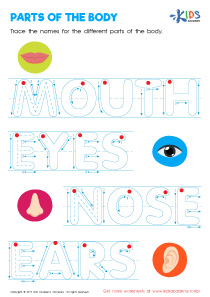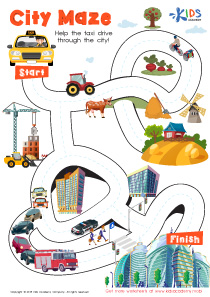Weather Worksheets for Ages 3-7
9 filtered results
-
From - To
Explore our engaging collection of weather worksheets designed specifically for children ages 3 to 7. These fun and interactive resources will help young learners understand different weather patterns, enhance their observation skills, and spark their curiosity about the world around them. From identifying sunny days to discussing rainy weather, our worksheets include colorful illustrations, matching activities, and creative exercises tailored to support early literacy and comprehension. Encourage your child's learning journey with these educational tools that make weather concepts exciting and accessible. Jump into the wonders of nature while fostering a love for learning through play! Visit us to get started today!
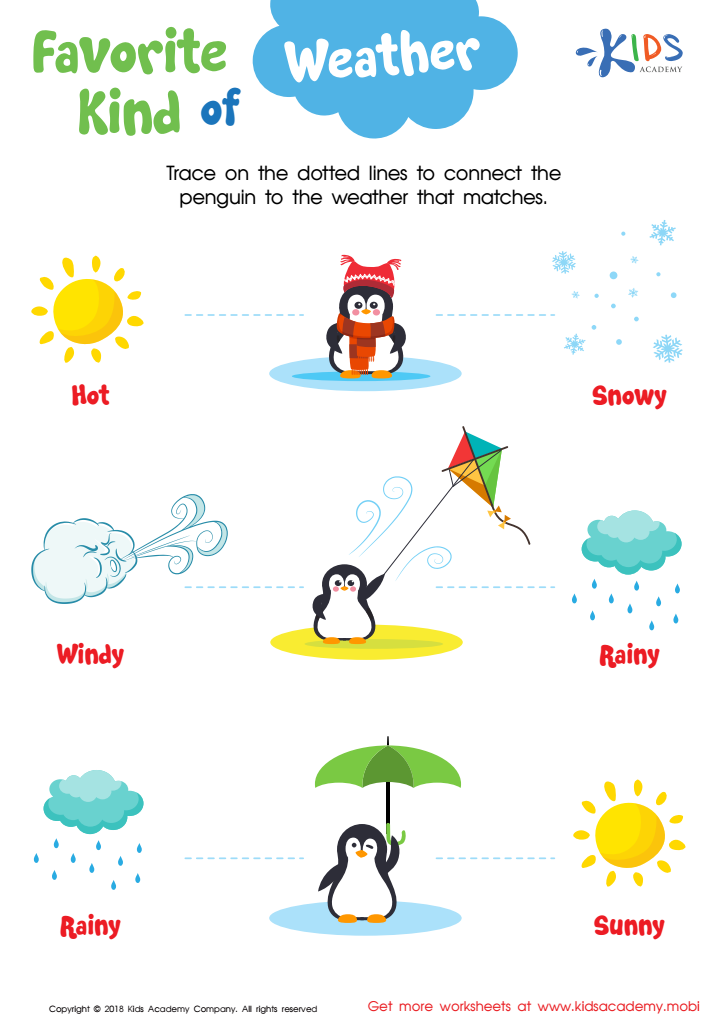

Favorite Kind of Weather Worksheet
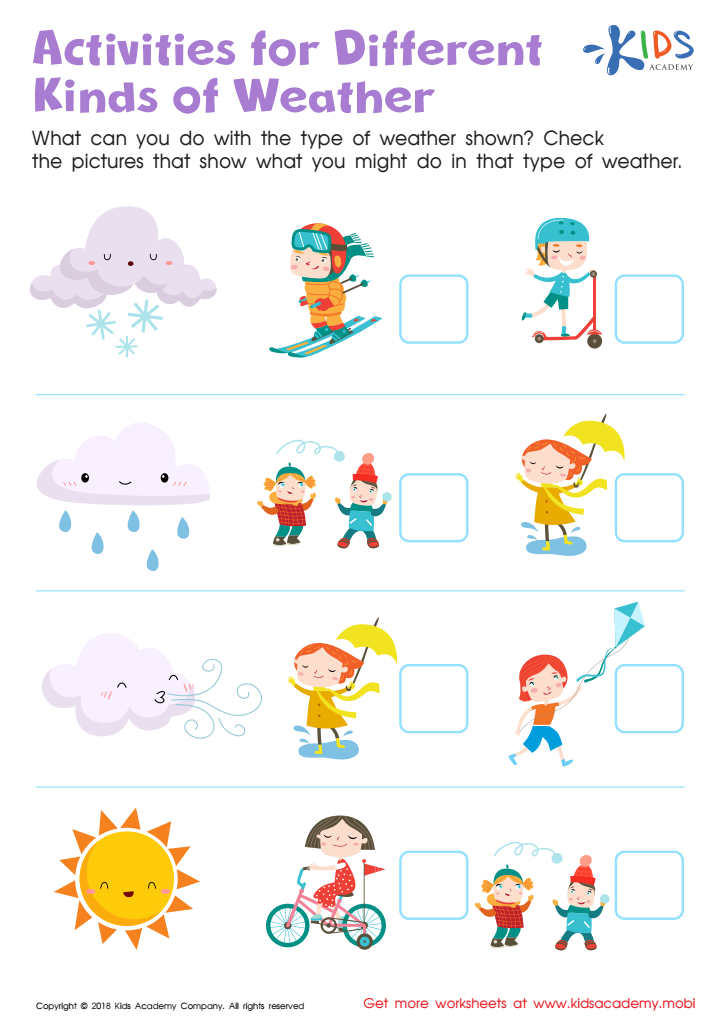

Activities for Different Kinds of Weather Worksheet
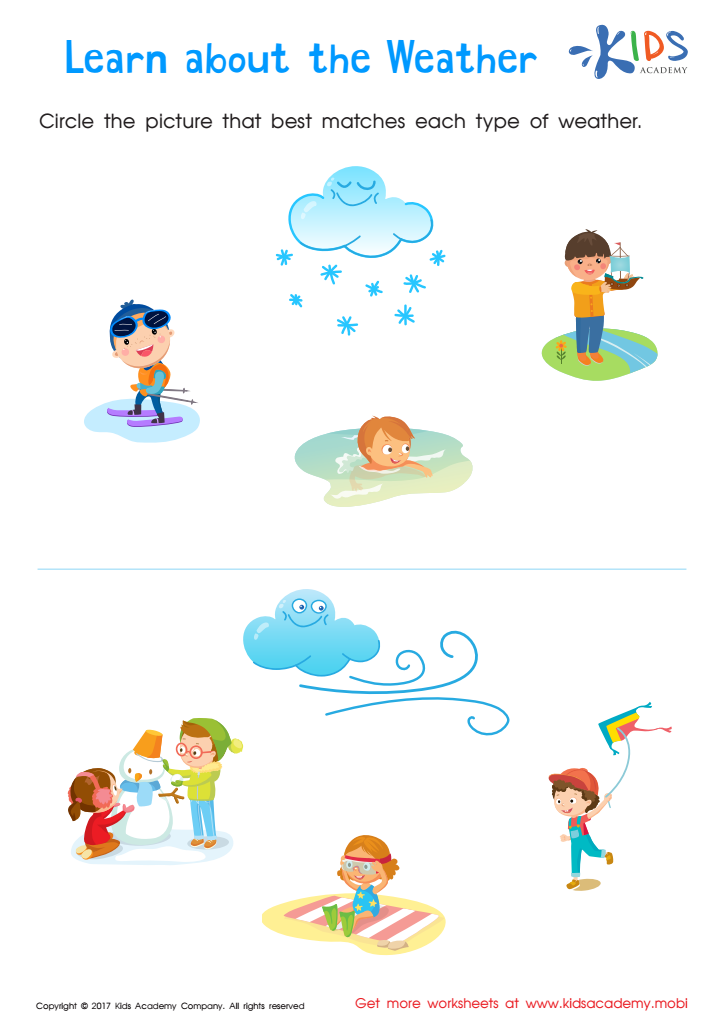

About the Weather Printable


Hows the Weather Worksheet


What's the Weather Like? Worksheet
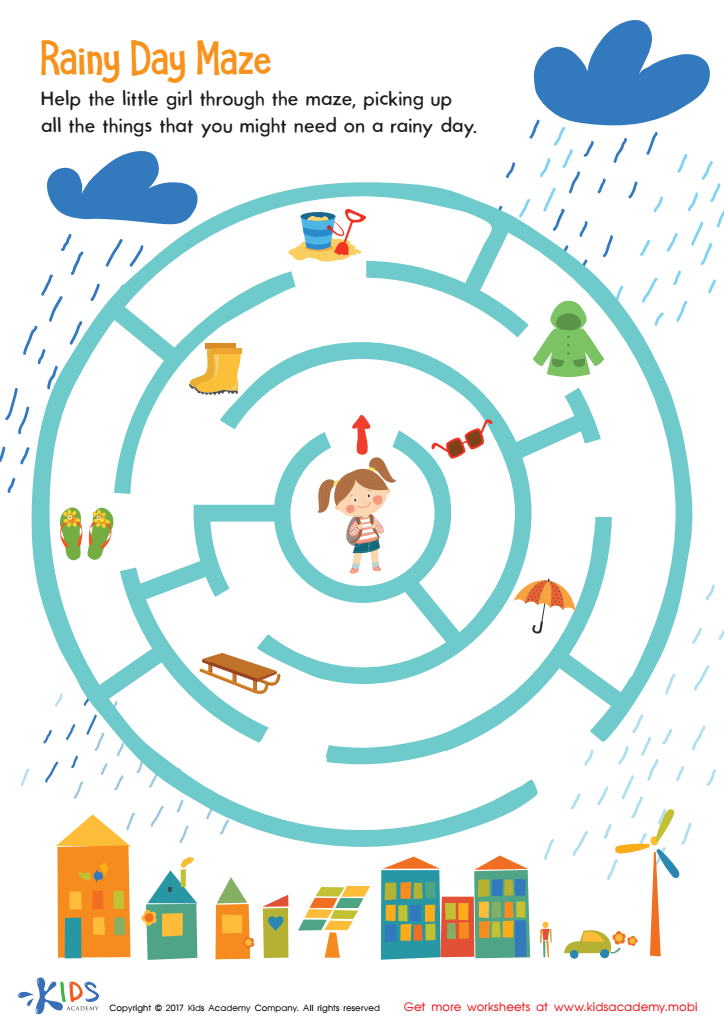

Rainy Day Maze Worksheet
Parents and teachers should care about weather for children ages 3-7 because it plays a crucial role in early learning and development. Understanding weather helps young children connect with the world around them and fosters curiosity about nature. Teaching kids about different types of weather, such as sunny, rainy, snowy, and windy, promotes vocabulary development and helps them express their observations and feelings.
Weather education also supports cognitive development. Children learn to make observations, recognize patterns, and understand cause and effect. For instance, they can notice how rain makes puddles or how snow is cold and fluffy. These lessons provide opportunities for hands-on activities, like crafting a rain gauge or making a weather chart, encouraging creativity and fine motor skills.
Additionally, discussing weather helps develop social skills as children collaborate on weather-related projects or stories. Understanding weather is also practical; teaching kids to dress appropriately for various conditions fosters independence and self-care.
Lastly, integrating weather into everyday discussions can instill a sense of responsibility about environmental care, encouraging them to respect nature. Overall, engaging children with weather enhances their learning, curiosity, communication skills, and awareness of their surroundings, laying the foundation for a lifelong appreciation for science and the environment.
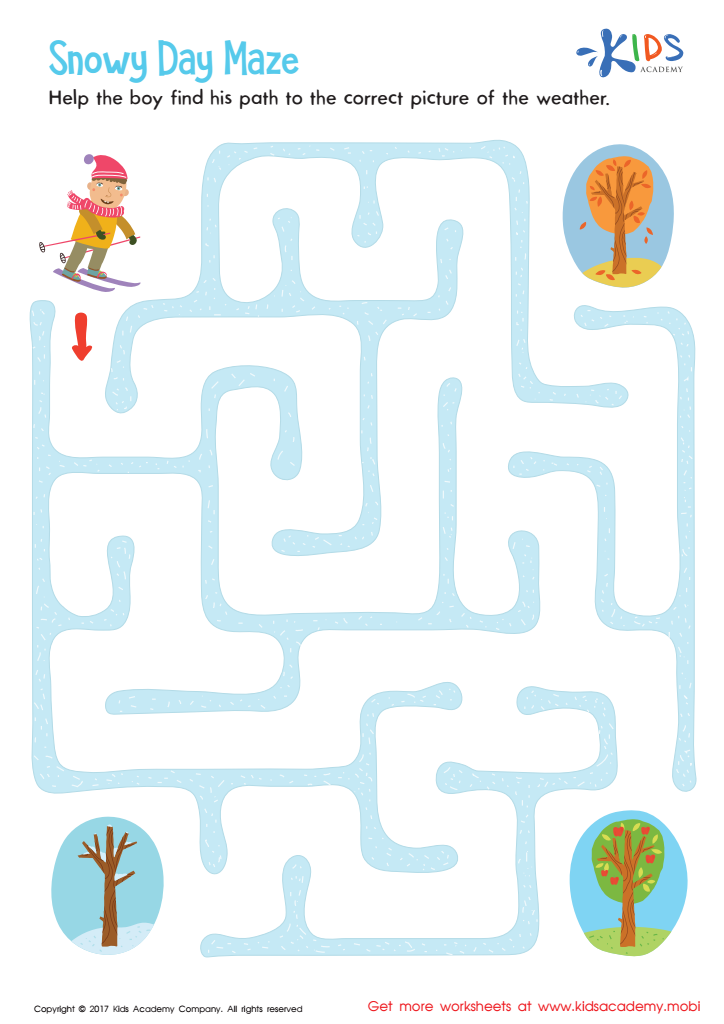
 Assign to My Students
Assign to My Students

